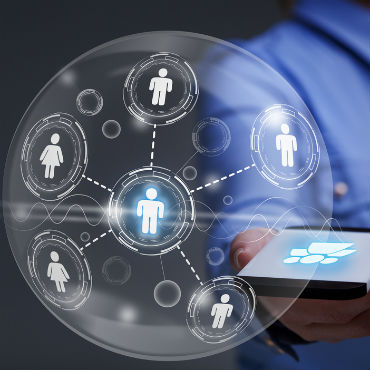What feds can learn from political campaigns

Elections are increasingly driven by systems that combine the power of social media and big data to connect with citizens. Those same principles can help agency IT as well.

The proliferation of smartphones, tablets and social media has created the expectation that information will be immediately available wherever we choose. Many government agencies at all levels are evaluating how to the provide capabilities that constituents now expect.
Deciding where to begin can be a daunting task, but -- as Americans once again head to the polls next week -- lessons learned from the 2012 presidential election can shed light on how technology solutions can improve government administration and public safety while increasing transparency and maximizing citizen engagement.
A tale of two whales
For many on Capitol Hill, the 2012 election showcased the power that social media and big data could hold in the government arena. The story behind the scenes was the arms race between two whale-named platforms -- Narwhal and ORCA.
Narwhal was a cloud-based platform, developed for President Barack Obama's campaign, that sought to create a unified profile of voters by connecting information repositories for analysis. This data-integration platform included social media, social monitoring and mobile apps in one system for voter registration and outreach. The most notable apps and platforms were Dashboard, a "virtual field office" app that helped volunteers collaborate on multiple devices, and DreamCatcher, a sophisticated text-analysis engine.
ORCA was Republican presidential nominee Mitt Romney's counterattack to Narwhal. The mobile-optimized platform sought to enable volunteers in swing-state polling stations to report voter turnout and spur last-minute get-out-the-vote efforts. Although ORCA ultimately failed, the concept was based on the same principles that drove Narwhal's success:
- Provide a unified system to monitor, collect and analyze information that can quickly be acted on.
- Provide mobile support and social collaboration to increase productivity and engage constituents.
- Provide information and transparency to build support and drive positive results.
Those three principles can also be used as a guideline for government officials seeking to modernize administrative services, public safety and health departments, and community outreach.
Government now
People expect to be informed about and have the ability to report on issues affecting where they live. Mobile app and location-based technology can help connect individuals to the government and give them the power to spur change in real time.
For example, CitySourced gives people the ability to alert government authorities about graffiti, potholes, water-main breaks, malfunctioning stop lights, excess garbage and more via a mobile application. Other tools allow citizens to snap pictures and upload them to a city's website with a time and location stamp.
These new solutions combine real-time community engagement with the ability for health and police departments to deploy field agents to remedy the issues. Once on the scene, public officials can update field reports from their phones or tablets and provide real-time feedback.
Real-time issue reporting and response can be further amplified if an agency has opted to integrate its back-end systems into the cloud. As with Narwhal, the system can analyze data to identify trends, and proactive efforts can be made to find the root cause of problems and fix them.
In addition, by using cloud-based systems, governments can access the technology from anywhere, and eliminate manual case-management processes that drain valuable time and are susceptible to human error.
Transparency, productivity and engagement
Cloud and mobile technology can improve transparency and communication with constituents. For example, mayors and city councils can use voice-over-IP services to host online meetings in conjunction with in-person town hall events. Those services can also give people a voice by conducting polls and surveys in real time. After the meetings, action items can be posted online to improve transparency and ensure that the public remains informed. In addition, social monitoring systems can identify future issues and add them to the agenda for future town hall meetings.
Federal agencies can take advantage of cloud and mobile technologies to modernize their infrastructure, improve coordination among agencies and increase employee productivity. By embracing the cloud, agencies can always have the most current IT services available while also being able to rapidly scale resources up or down to reduce costs.
In addition, agencies can unite one another's environments or open application programming interfaces so they can share information and collaborate in real time. Earlier this year, the Queensland, Australia, government did just that when it partnered with Microsoft to deliver Office 365 and Yammer to nearly 150,000 government employees, making collaboration and communication among employees and constituents a seamless process.
The type of mobile and cloud-based systems that drove the last presidential election can improve the overall welfare of citizens while giving agencies a modern, intuitive and integrated platform that allows them to rapidly respond to issues, generate revenue and improve administrative efficiency.


